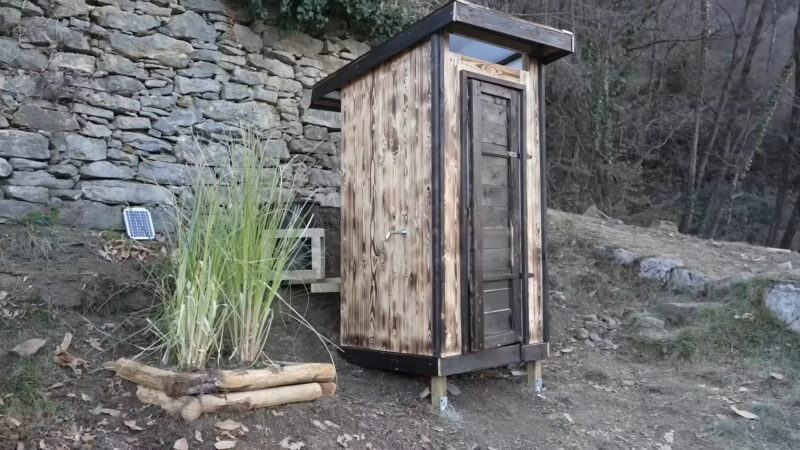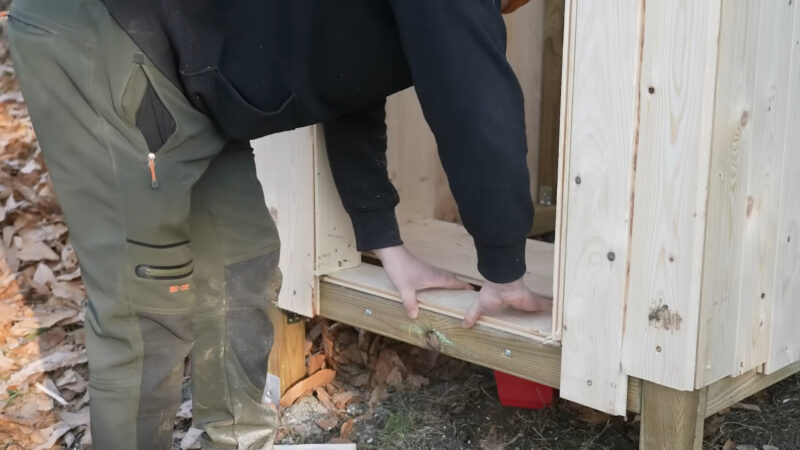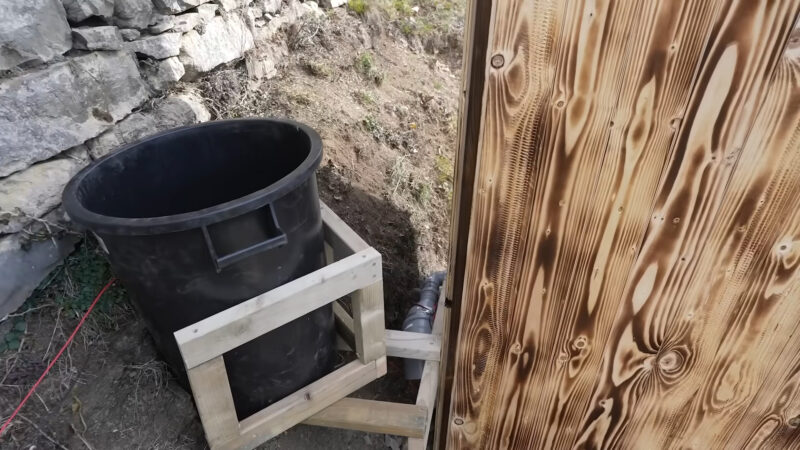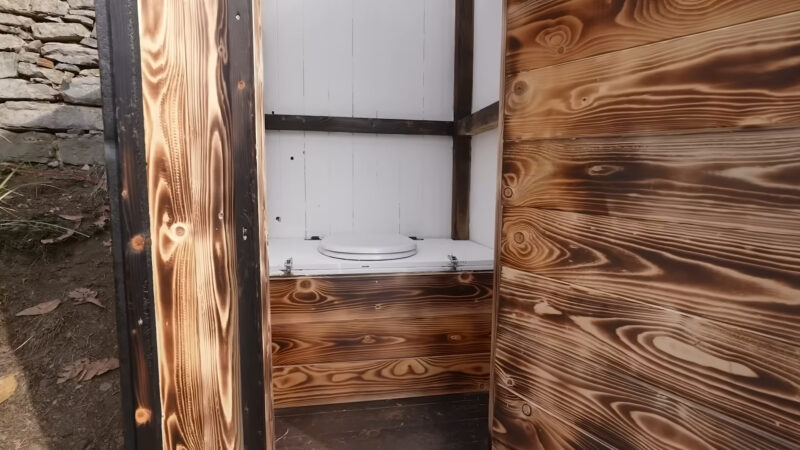Composting toilets are increasingly becoming popular as a sustainable and eco-friendly alternative to traditional flush toilets. These innovative systems offer a unique approach to waste management by transforming human waste into valuable compost, which can be used as a nutrient-rich fertilizer for plants.
By examining the advantages and disadvantages of composting toilets, potential users can make an informed decision about whether this system is suitable for their needs. Knowing both sides of the coin, it is much easier for you to make a decision whether to invest in one of these.
That is the part where I come in, to provide you with the most important advantages and disadvantages you should be aware of in the case of composting toilets. Buckle up and let us begin.
Environmental Benefits and Drawbacks

First, we want to touch upon environmental factors.
Water Conservation
One of the primary environmental benefits of composting toilets is their ability to conserve water. Traditional flush toilets can consume a significant amount of water, contributing to scarcity in areas prone to drought. In contrast, composting toilets require little to no water for flushing, thus substantially reducing water consumption.
This decreased usage not only benefits the environment by minimizing pressure on water resources but also reduces the homeowners’ water bills.
Reduced Chemical Use
Another advantage of composting toilets is their reduced reliance on chemicals. Traditional sewage systems often rely on harmful chemicals to break down and treat waste, which can contaminate water sources and disrupt ecosystems.
Composting toilets, however, rely on natural processes to break down waste into nutrient-rich compost. This organic matter can be safely used as fertilizer for garden soils, providing an environmentally friendly, chemical-free alternative. While composting toilets offer numerous environmental benefits, they are not without their drawbacks:
- Although a well-maintained composting toilet produces an odor-free, eco-friendly, nutrient-rich compost, a poorly maintained system can emit unpleasant odors and contribute to negative environmental impacts like greenhouse gas emissions (particularly methane and carbon dioxide).
- Composting toilets can be less effective in breaking down waste when used improperly or not maintained regularly. This can result in incomplete decomposition and the potential for harmful pathogens to remain in the waste, posing a risk to human health and the environment.
Design and Installation Considerations

Another prominent factor is design and factors that influence installation.
Space and Mobility
Composting toilets are designed to save space, as they do not require extensive plumbing or wastewater systems. They typically have a compact design and can fit in most bathrooms, with some models specifically designed for mobile homes or off-grid living situations.
More efficient designs, such as those with separate composting chambers, may be larger and not suitable for all spaces. It’s also worth noting that centralized composting toilet systems may require additional space to accommodate the composting unit and ventilation components.
These systems consolidate waste from multiple toilets in a single location for more efficient composting.
Installation Requirements
In comparison to traditional toilets, composting toilets are generally more affordable and quicker to install. A residential composting toilet costs between $1,000 and $1,500, while traditional toilets with septic installations range from $1,500 to $5,000, in addition to $300-$500 for the toilet itself.
The installation process may vary depending on local rules and regulations, property configurations, and required connections to ventilation systems. Some composting toilets are self-contained and can be easily installed without professional assistance, while others may require a connection to a centralized composting system.
These connections can be made via pipes or removable containers, which may need to be periodically emptied depending on the system. One thing you don’t have to worry about is storing the heap. The reason is quite simple, you can layer it easily in a bin or store it in a tumbler.
Knowing the differences between these two concepts will help you determine which one is right for you.
Ventilation Systems
Proper ventilation is crucial for the efficient and odor-free operation of composting toilets. A well-designed ventilation system will keep the composting chamber adequately aerated to promote decomposition, while also eliminating odors from the bathroom area.
his is usually achieved through a combination of fans and vent pipes that direct air from the toilet to the outdoors. The specific ventilation requirements will depend on the toilet’s design and the available space for installation.
In some cases, additional vents or fans may be needed to ensure effective odor control. It’s essential to follow the manufacturer’s guidelines and local regulations when installing a ventilation system for a composting toilet.
Operational Advantages and Disadvantages

Composting toilets offer some operational advantages when it comes to maintenance and cleaning. With minimal maintenance requirements, they are often considered an eco-friendly and cost-effective option. Frequent inspection and turning of the compost pile helps ensure proper decomposition, keeping maintenance relatively simple.
There are some downsides, such as extra compost maintenance for larger households or public facilities where increased usage creates higher compost volume. In addition, some models require periodic removal of liquid waste, which can be labor-intensive and undesirable for some users.
Odor Management
An important aspect of composting toilets is managing the odors that come with waste decomposition. When properly managed, these systems can successfully control unpleasant smells by promoting aerobic decomposition with the help of aerobic bacteria.
Proper ventilation and odor-absorbing materials such as peat moss or sawdust contribute to effective odor management.
On the other hand, if the composting toilet is not well-maintained or airflow and ventilation are inadequate, it can lead to the presence of foul odors. In some cases, users may need to take additional measures, such as carbon filters, to enhance odor control.
Waste Decomposition
One of the key advantages of composting toilets is their ability to break down solid and liquid waste into a safe, nutrient-rich humus. The decomposition process is driven by various factors, including the following:
- Aerobic bacteria: Helps break down organic matter efficiently.
- Moisture: A balanced moisture level is essential for effective decomposition.
- Temperature: As decomposition produces heat, maintaining adequate temperature is crucial.
However, there are a few cons associated with waste decomposition in composting toilets. For instance, if the balance of bacteria, moisture, and temperature is not maintained appropriately, the decomposition process may slow down or become anaerobic, which will result in unpleasant odors and a less effective waste treatment system.
Cost Analysis

When considering the switch to composting toilets, one of the key factors is the cost. The initial investment can be quite high, with prices ranging from a few hundred dollars to several thousand dollars.
There are potential long-term savings with a composting toilet system when compared to a traditional toilet. This results in a considerable reduction in water usage and cost over time.
Additionally, composting toilets eliminate the need for a septic system or connection to a city sewer, saving on installation and maintenance costs for these systems.
Traditional and Composting Systems
To better understand the financial implications of choosing a composting toilet, let’s compare the costs associated with traditional and composting systems.
- Traditional Toilet:
- Installation: The cost of installing a septic system and a traditional toilet can range from $1,500 to more than $5,000, depending on the location and property configuration.
- Water Usage: Standard toilets use approximately 1.6 gallons of water per flush; with an average of 5 flushes per person per day, this can add up to thousands of gallons of water each year.
- Maintenance: Regular maintenance of a septic system or sewer connection may incur additional costs.
- Composting Toilet:
- Installation: Composting toilets typically have fewer installation requirements and associated costs, making them cheaper and faster to install overall.
- Water Usage: As mentioned earlier, composting toilets use little to no water, significantly reducing water usage and associated costs.
- Maintenance: Composting toilets require regular addition of carbon materials (such as sawdust or peat moss) and occasional emptying of the compost, but these costs are relatively low.
While the upfront cost of a composting toilet may be higher than a standard toilet, the long-term savings in water conservation and eco-friendly wastewater management could offset the initial investment for those seeking a more sustainable and off-the-grid solution.
FAQs
How bad does a composting toilet smell?
A properly functioning composting toilet should not emit any unpleasant odors inside the living space. Most of these toilets have a venting system in place that channels all odors outside. Additionally, adding materials like sawdust or peat moss to the composting chamber can help control moisture and odor.
What if you have diarrhea in a composting toilet?
If diarrhea occurs, it can be managed by increasing the amount of absorbent materials such as sawdust or peat moss to help maintain the correct moisture levels within the composting chamber. This helps to ensure the composting process continues efficiently.
Are composting toilets practical?
Composting toilets can be a practical choice for certain situations, such as off-grid living, environmentally conscious households, or locations with limited access to water and sewage infrastructure. They are effective at reducing water consumption and can be cost-effective in the long run.
How long can you leave a composting toilet?
The length of time a composting toilet can be left without needing to be emptied depends on factors such as the size of the toilet, the number of users, and the efficiency of the composting process.
In Summary
Composting toilets can be an eco-friendly and cost-effective alternative to traditional toilets, particularly in remote locations.
They also come with their own set of challenges. Users must carefully evaluate these pros and cons to determine if a composting toilet is the right choice for their specific needs and preferences.
I am sure you will find this insight of mine highly useful when making decision in the future.
Related Posts:
- Best 13 Composting Toilets For Tiny Houses in 2024
- 20 Ways to Reduce Climate Change - Save Our Planet
- How to Reduce Your Pool's Environmental Impact - 2024 Guide
- Compost 101: A Beginner's Guide to Organic Composting
- How to Make a Compost Heap: 10 Top Tips - Waste Not,…
- How Does a Compost Toilet Work? - Green Thrones








